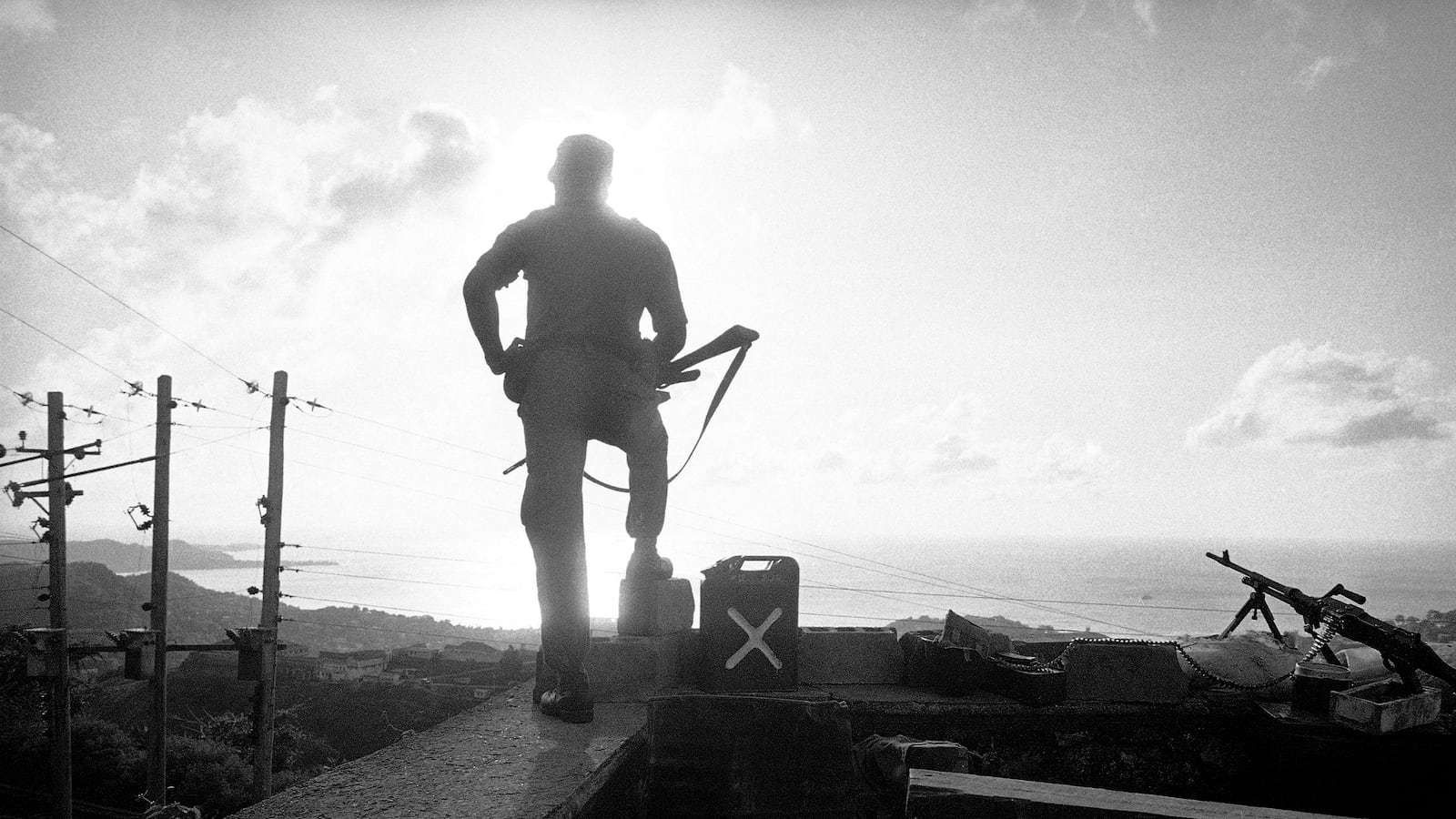One night in late October, 1983, I listened to a BBC short wave broadcast reporting that the United States was about to invade Grenada. I chuckled, said to myself, “Crazy Brits,” and went to sleep. But the crazy Brit was right: in the first military deployment since Vietnam, US forces swarmed over the small Caribbean island (population roughly 120,000), flew some American medical students home, and removed the Marxist-Leninist regime of the New Jewel Movement.

Several ships participated in Operation Urgent Fury, which sent a Marine amphibious group to the north, and Rangers from the 82nd Airborne to the southern part of the island. Contingents from neighboring countries were also involved. Despite the usual snafus, Urgent Fury was operationally and politically successful. The students kissed the American runway, Ronald Reagan’s image was considerably enhanced, and a year later a new Grenadian government was elected in free elections.
The operation had some hilarious moments, of which my favorite concerns the Brits. They had a Governor General by the name of Paul Scoon, and had equipped him with an encryption code and a secret cable address for use in dire emergencies. In the fall of 1983, all hell broke loose in Grenada. Scoon took refuge in his house, fished out the code, and sent an urgent message to the secret address. But years had passed, and the secret address was no longer a cover for British security officers, but now the honest telex number of a manufacturer of cardboard boxes. When they received an incomprehensible cable from Grenada, they just ignored it. All of which explains why Margaret Thatcher was so surprised at the American invasion. She remarked at the time that she hadn’t heard anything about events in Grenada.
In the course of the US occupation, the archives of the New Jewel Movement regime—some 35,000 pounds’ worth of documents—were captured, and, after being sprayed for scorpions and spiders, flown to Washington. The late Herbert Romerstein (as an employee of USIA) and I (as a part-time consultant to the Departments of State and Defense) were asked to organize the documents into an archive. The work took a bit more than a year, and in November, 1984, we published a selection of documents, and shortly thereafter the whole lot was made publicly available in the National Archives.
The US military was not the only source of documents. The diary of Prime Minister Maurice Bishop was found by some adventurous journalists from Soldier of Fortune magazine, and they swapped them with us, in exchange for copies of “our” documents.
It’s rare that one gets such a clear documentary picture of a secretive totalitarian regime and, aside from some Spanish-language material, it’s all in English. At the time, many challenged the Reagan administration’s claim that Grenada was a close ally of the Soviet Union (preferring to describe the Bishop regime as a “progressive” local phenomenon). But their own documents left little doubt—as Romerstein and I wrote at the time:
The close working relations the regime established with the Government of Cuba…showed that Bishop intended to model his revolution on that of the Soviet Union and…Cuba. The attention shown to delegations from the Soviet bloc and from such radical regimes as Qadaffi’s Libya and Kim-il Sung’s North Korea…indicated the NJM’s real intentions.
The New Jewel Movement proudly embraced Marxism-Leninism, and sent many comrades to Russia and Cuba for training (we included a letter to KGB Chairman Yuri Andropov thanking him for his help, and requesting more of it). Repression of political opponents was very nasty, especially when it came to the local churches. Anticlerical activities were closely coordinated with the Cubans—there was an exchange of Grenadian and Cuban officials—leading to extensive activities against Grenadian Christians, and the creation of an official “Liberation” church. This was all part of the regime’s extensive program of indoctrination.
The overthrow of the NJM in Grenada provided a unique window into the inner workings of the Soviet Empire on the lowest rungs of its hierarchy. The Grenadians rarely got anything—aside from training in the Soviet Union—directly from their Soviet comrades. Most operational relations were handled by other members of the Soviet bloc. The Cubans ran most of the military matters, from building a big runway at the local airport to shipping weapons (enough for an armed force of 10,000 soldiers in a neighborhood where “defense” was usually entrusted to miniscule constabularies) and providing training on both islands. Agricultural assistance came via Bulgaria, and so forth.
Perhaps most importantly, looking through the Grenadian window reminds us about the importance of ideology. The NJM comrades were avid believers in Communist doctrine, and they had no doubt that they were destined to have a small chapter in the glorious history of the inevitable triumph. In the end, internal conflict tore apart the New Jewel Movement. Bishop was killed by one of his deputies, Bernard Coard (who had studied at Brandeis University). The ensuing violent chaos alarmed Grenada’s neighbors, and they encouraged Reagan to act.
Even so, Grenada had its little chapter in the history of global Communism, albeit the opposite of what Bishop had hoped. His murder, and the liberation of Grenada by the imperialists to the north, marked the first time a Communist regime had fallen. Such an event was not supposed to be possible, as the Brezhnev Doctrine held that once a country had become Communist, the iron laws of history made that an irreversible step.
That was 16 years before the Berlin wall was torn down, and the Soviet Empire followed little Grenada onto the ash heap of failed totalitarian regimes. It’s worth our time to look at it anew, especially as the current totalitarians are invoking their own version of the Brezhnev Doctrine, fighting for the restoration of their ancient Caliphate.
Michael Ledeen is a Freedom Scholar at the Foundation for the Defense of Democracies.





